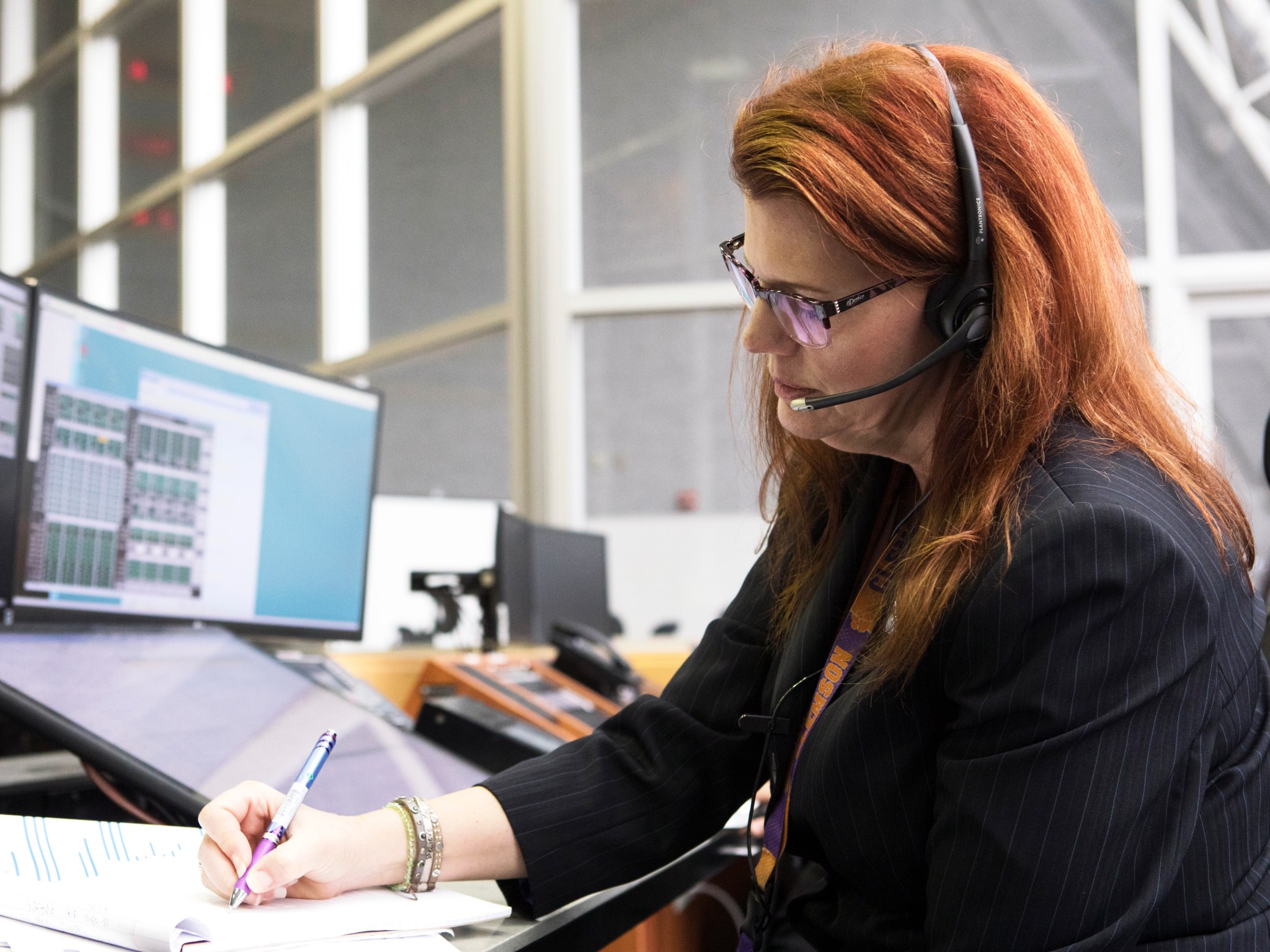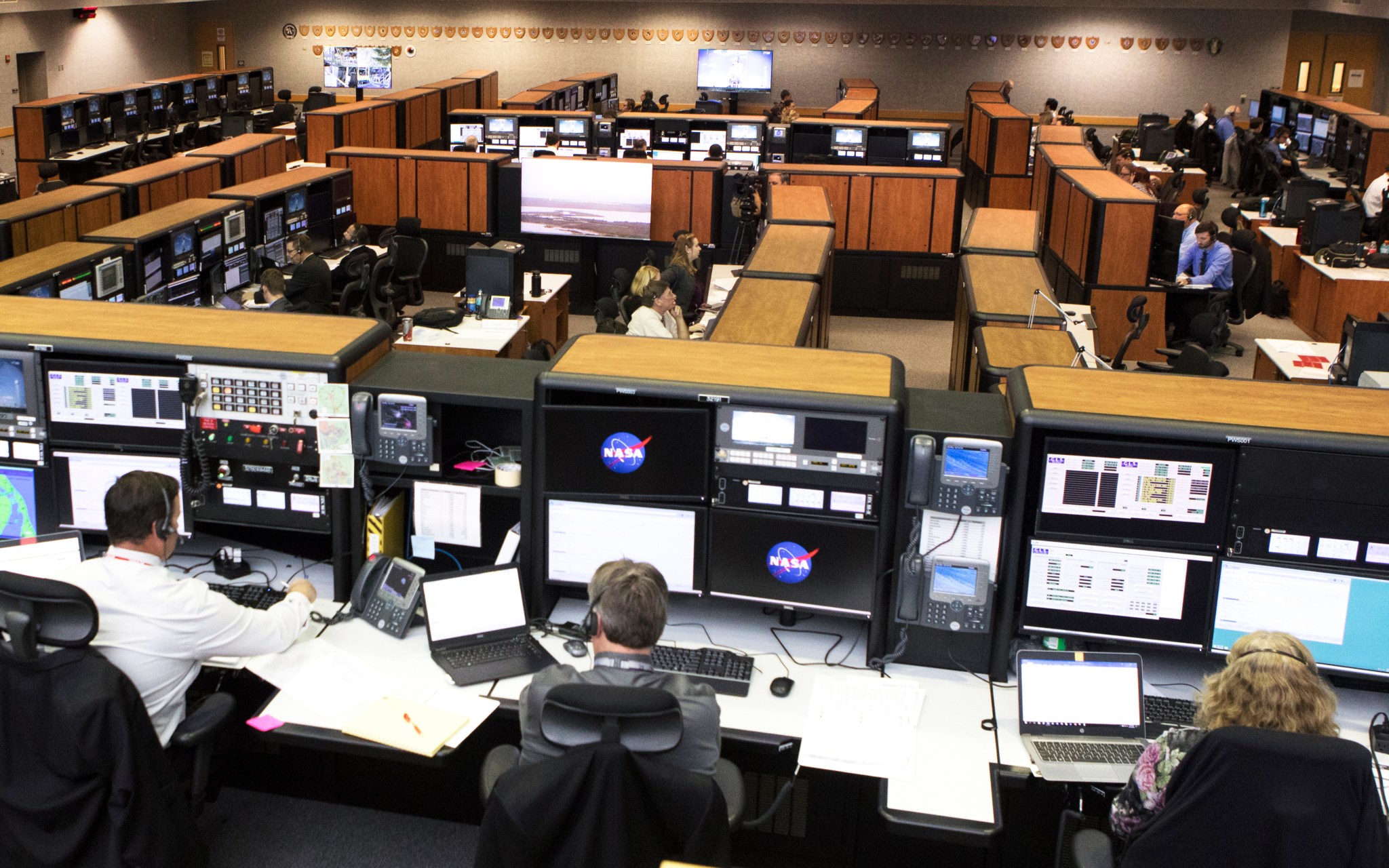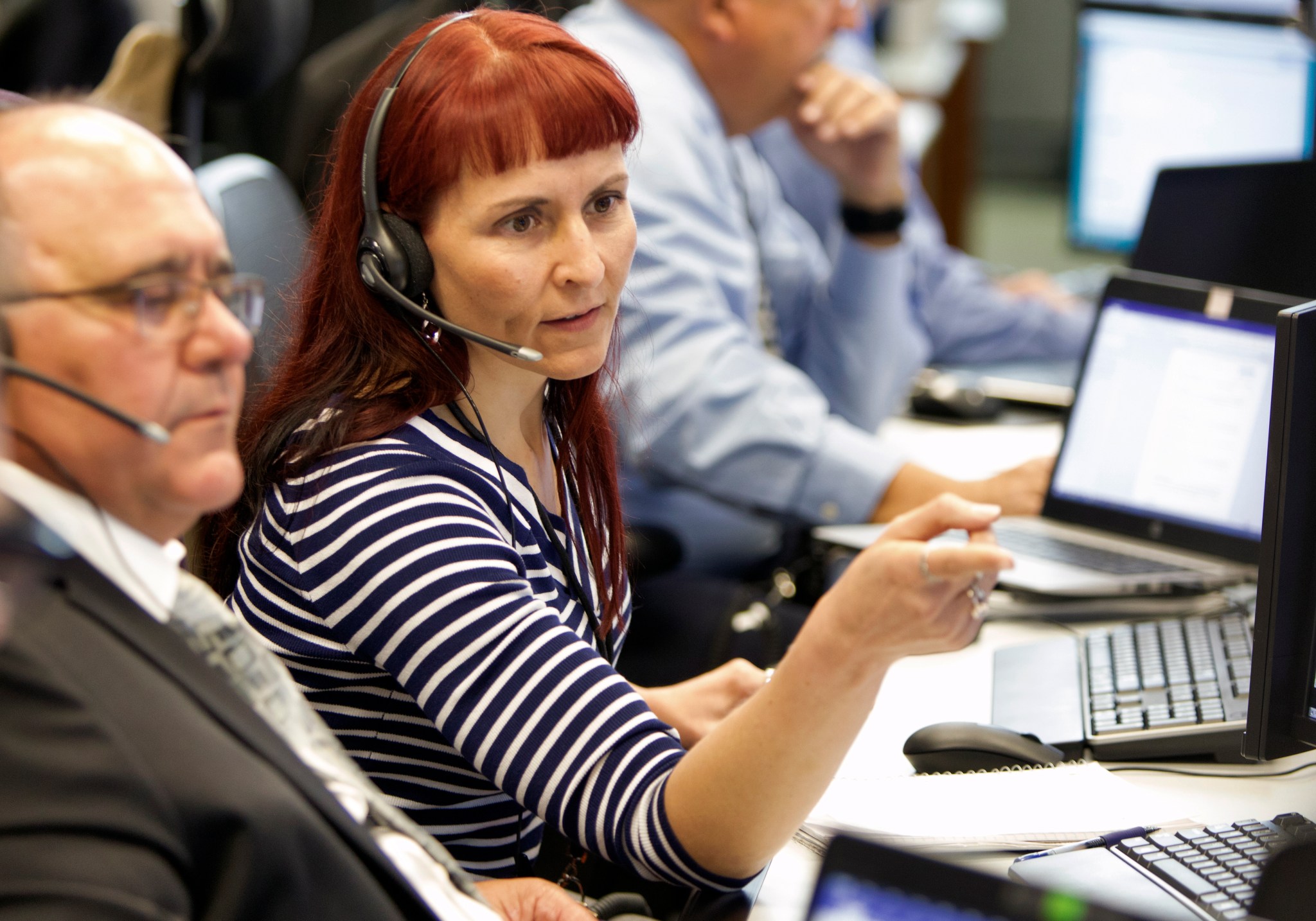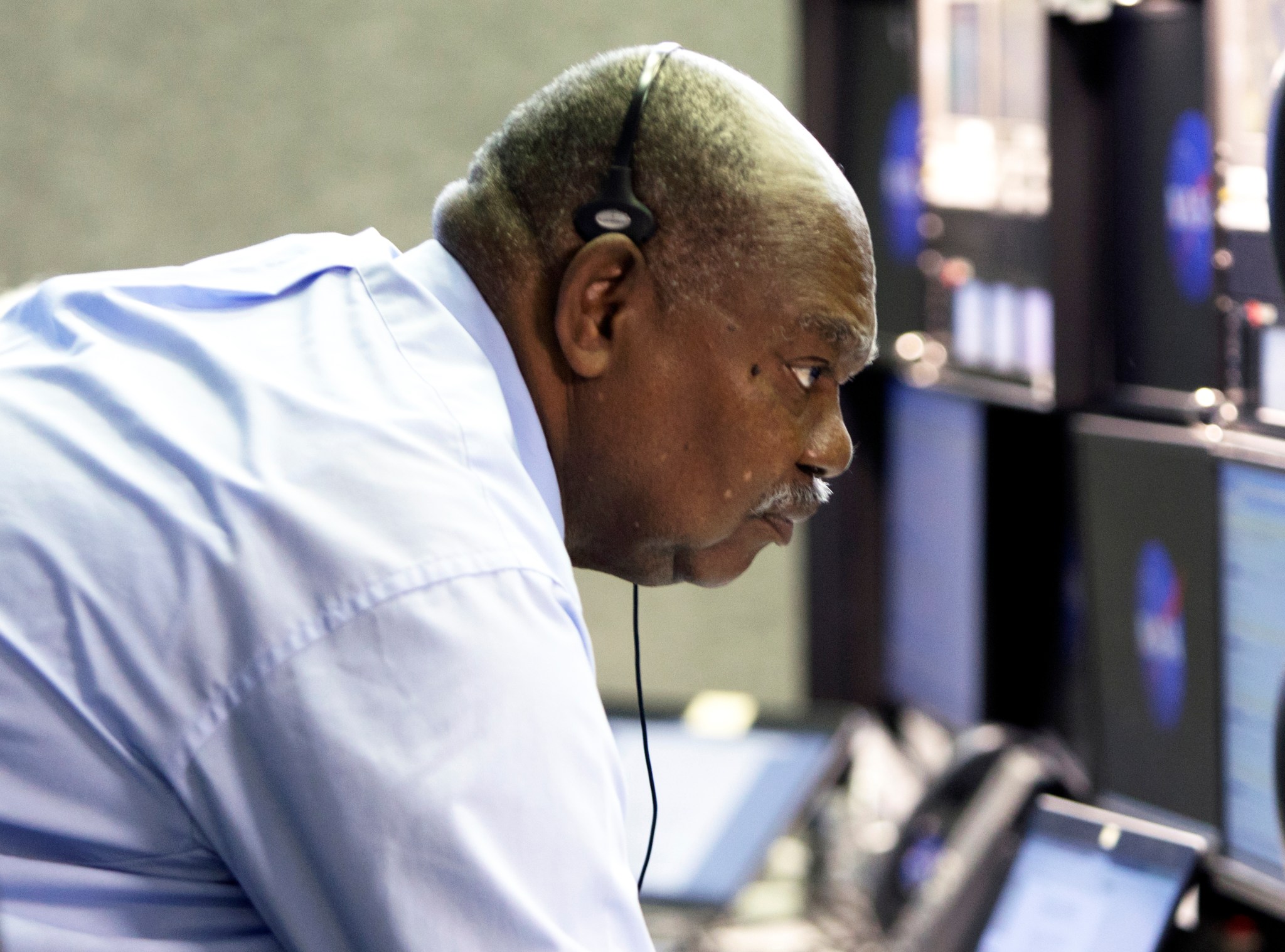By Bob Granath
NASA’s Kennedy Space Center, Florida
Rehearsal helps ensure everyone and everything is ready for a big performance. In the business of launching rockets, a team of engineers and operators at NASA’s Kennedy Space Center in Florida recently rehearsed the terminal countdown in a demonstration for the performance of the inaugural flight of the agency’s Space Launch System (SLS) rocket and Orion spacecraft.
The demonstration took place on Dec. 14 in Firing Room 1 of Kennedy’s Launch Control Center (LCC) and was intended to help validate the launch team’s capability to perform the countdown for Exploration Mission-1, the first integrated test of SLS and Orion, and respond to problems put into the system for practice.
The countdown the team worked is a carefully planned set of procedures leading up to ignition of a rocket’s engine and liftoff. The “terminal count” is the crucial activities taking place inside the final 1 hour, 20 minutes prior to liftoff. At that point, fueling of the SLS core stage and upper stage have been completed.
“This demonstration was designed to give the launch team an understanding of what to expect with a new vehicle,” said Charlie Blackwell-Thompson, launch director for the first flight. “This also will help us gauge where we are as a team in our preparations for future simulations and the upcoming mission.”
As launch director, Blackwell-Thompson led the Exploration Ground Systems (EGS) team of SLS and Orion experts performing the demonstration. Software called an “emulator” provided launch controllers with a virtual experience of what would be happening with the rocket at Kennedy’s Launch Complex 39B, and video monitors depicted a realistic image of SLS and Orion at the launch pad.
“We had the full launch team of 91 experts, test conductors, engineers and managers, at their consoles in the Firing Room for the demonstration,” Blackwell-Thompson said.
The size of the group in the LCC Firing Room has been significantly streamlined since the days of Apollo and the space shuttle. Over 450 were required to support Saturn V launches to the Moon. That was cut more than half to about 200 for shuttle.
“It’s a smaller group than in the past, but we’re striving for efficiency. About two years ago we did a console positon assessment,” Blackwell-Thompson said. “We studied workload, the number of commands sent by controllers and launch commit criteria. Tests like this will help us get to the ideal staffing before launch.”
The terminal countdown demonstration was designed to prepare for a full Terminal Countdown simulation training event, early next year. There will be a series of demonstrations as the team readies for the mission.
“This countdown demonstration was also intended to show the capabilities of our simulators and emulators to go through a launch countdown,” Blackwell-Thompson said. “This is important, because next year we get into our full training regime using these capabilities.”
Rehearsing for the mission is not just about everything going as planned, and the Kennedy team also had to deal with simulated problems.
“The key is for those in the Firing Room to learn how to work individually and as teams to quickly develop solutions as problems arise,” Blackwell-Thompson said.
The final stages to the countdown included a built-in hold at the T-minus 10 minute mark and culminated in a simulated ignition of the SLS main engines and end at T-Zero.
Including the holds, the whole process took about three hours.
Exploration Mission-1 will be an unpiloted flight test, the first in a series of increasingly complex missions, providing a foundation for human exploration of deep space. During the first mission, Orion will travel 280,000 miles from Earth, thousands of miles beyond the Moon over the course of about a three-week flight. The second Orion flight, Exploration Mission 2, will include a crew to test the spacecraft’s critical life support systems and preparing for future trips to the Moon, and eventually missions to Mars.

































